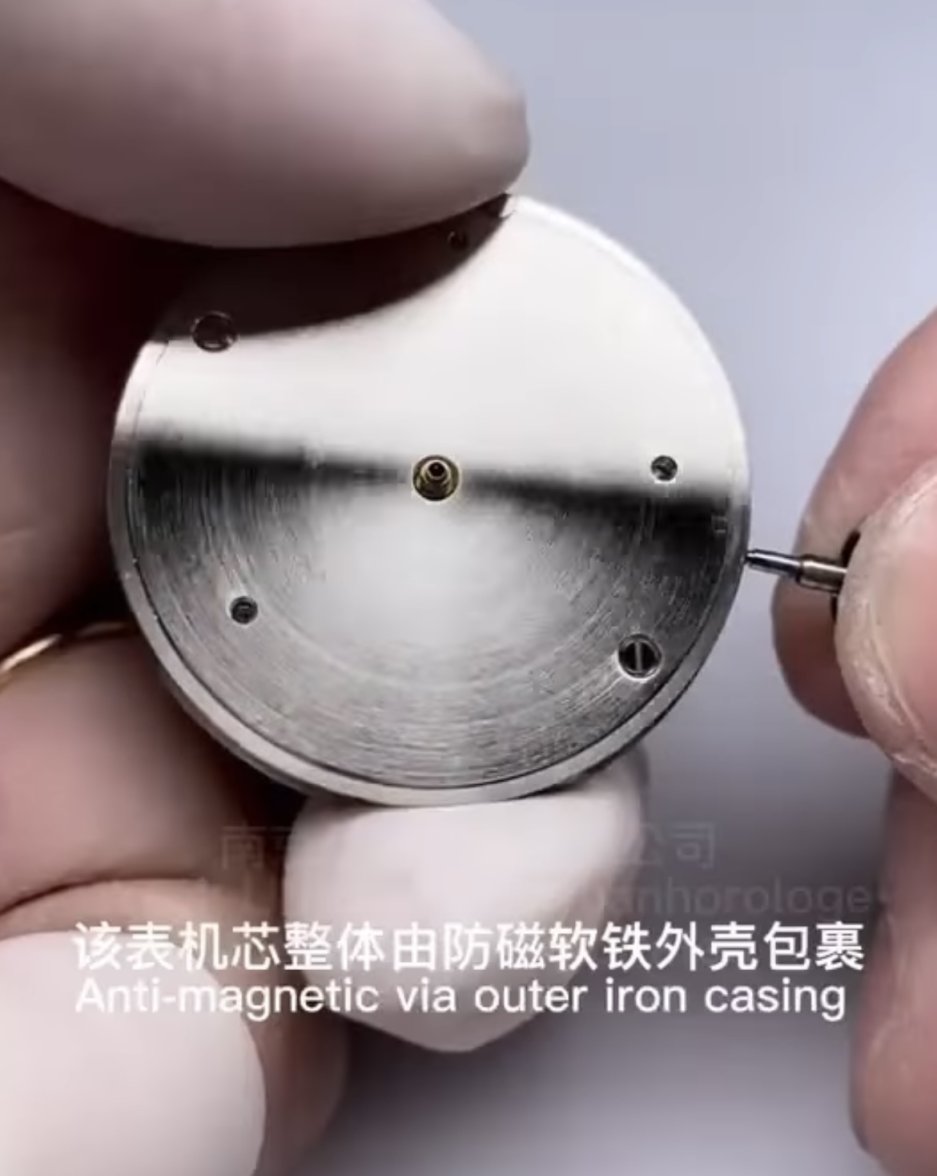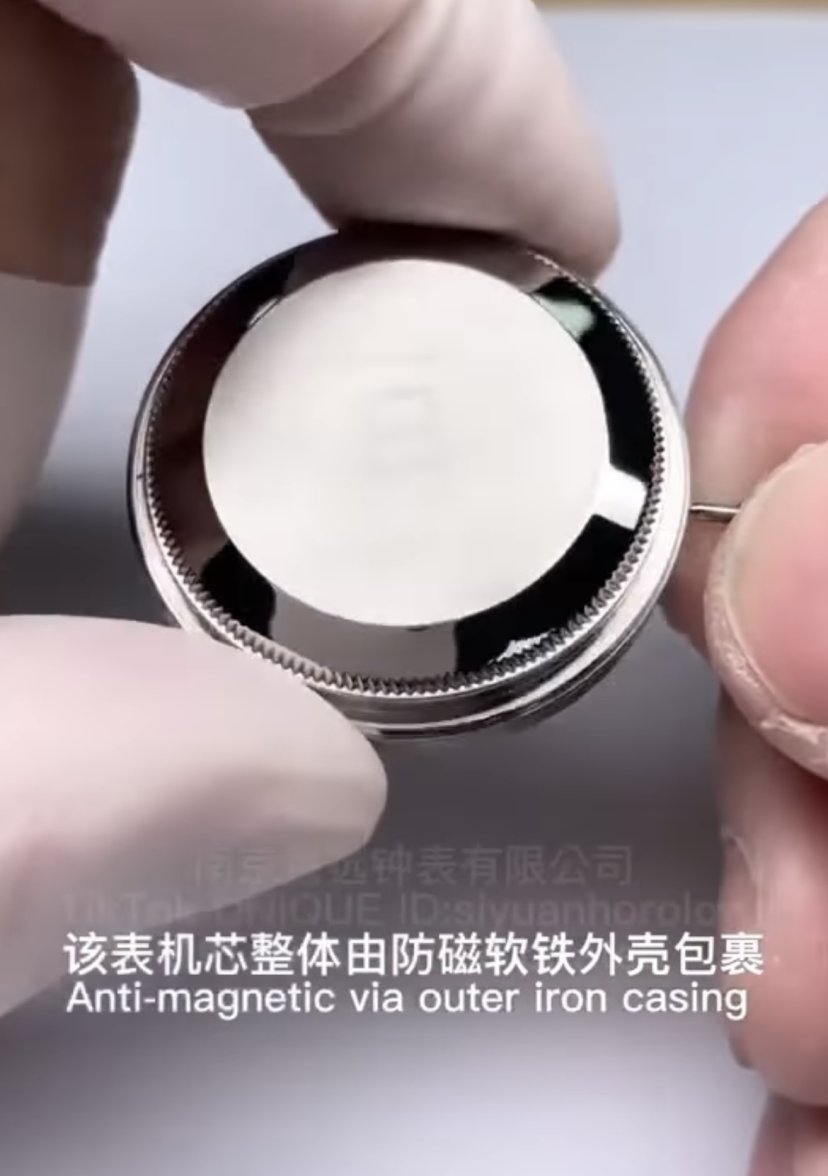My greying Milgauss
Dan S
·I haven't read the thread well enough to know why people are criticizing you, but as a physicist, I feel comfortable saying that in the case of the IWC, the design does essentially serve as a Faraday cage/magnetic-shield. As I understand it, there is a continuous surrounding conductive enclosure around the movement (the soft iron back cover connects to the back of the dial) and that is how a Faraday cage is used to shield things from external fields. It isn't the way we would make a Faraday cage in the lab, but it still serves that purpose. If people are telling you that a Faraday cage must be made of mu-metal mesh, I think they are defining the concept too narrowly.
Edited:
Foo2rama
··Nowhere near as grumpy as he used to be...I haven't read the thread well enough to know why people are criticizing you, but as a physicist, I feel comfortable saying that in the case of the IWC, the design does essentially serve as a Faraday cage/magnetic-shield. As I understand it, there is a continuous surrounding conductive enclosure around the movement (the soft iron back cover connects to the back of the dial) and that is how a Faraday cage is used to shield things from external fields. It isn't the way we would make a Faraday cage in the lab, but it still serves that purpose. If people are telling you that a Faraday cage must be made of mu-metal mesh, I think they are defining the concept too narrowly.
no it’s just that faraday cages do not stop magnetic forces.
OptionZ
·Recent Mosso review does reference a ferrous dial
watchyouwant
·The old Ingenieur's, MK 11's from IWC and JLC, Omega's mil. 1953 and all Railmasters, the original vintage Rolex Milgauss and the Patek Amagnetic , the JLC Geophysique and others all had Mu Metal properties. I owned all of them and could check out the set up.
OptionZ
·- So, small mystery solved. The Jack Forster's comparison, he mentioned that neither the Milgauss nor the Omega >15,000 Gauss attracted much to his strong magnet. This makes sense for the Omega, but not for the Milgauss.
- This video does show the magnet attracted to the Milgauss
Foo2rama
··Nowhere near as grumpy as he used to be...
- So, small mystery solved. The Jack Forster's comparison, he mentioned that neither the Milgauss nor the Omega >15,000 Gauss attracted much to his strong magnet. This makes sense for the Omega, but not for the Milgauss.
- This video does show the magnet attracted to the Milgauss
what mystery is it solving?
- Posts
- 18
- Likes
- 57
gerdson
·As an engineer, I love the turn this thread has taken. 😁
Unfamiliar_Moon
·Haven’t noted any greying of my GV dial over the years. Always thought it was a bit more grey than black at day 1 vs the non-GV model. So I never tried to note if it’s changing, and it’s not like I see many GV in the wild to compare.
Scarecrow Boat
·I just watched a video that made me think of @OptionZ and this discussion of what the dial is made of. While they haven’t been around for a little while, I figured others would be interested to see. Unfortunately this video is in the form of a “story” on Instagram and I am unable to share it here, so here are a few screenshots.
Starting with, once the caseback has been removed:
I still believe the dial to be brass. According to the video, the dial is affixed to an iron casing.
Here is the dial side of the movement casing.
Here is the side of the movement case that is seen in image one
And the movement once the back of the movement casing is unscrewed.
Starting with, once the caseback has been removed:
I still believe the dial to be brass. According to the video, the dial is affixed to an iron casing.
Here is the dial side of the movement casing.
Here is the side of the movement case that is seen in image one
And the movement once the back of the movement casing is unscrewed.
nkhandekar
·There is a video of a quite grey Milgauss on Youtube:
Watch my Whisky
·mine is doing this too. I’m not bothered.
So much for never going back.
So much for never going back.
watch3s
·id say it looks pretty cool
Similar threads
Rolex Milgauss - Black Dial - 40mm - Green Crystal - 116400GV ( excellent )
Location: US
FSOT
mdgrwl
Watches For Sale
$8950USD
- Posts
- 0
- Views
- 85
Rolex Milgauss 116400 GV Green Crystal Black Dial 2021 Box & Papers
Location: US
TFA
FS
SohAIS
Watches For Sale
$10974USD
- Posts
- 0
- Views
- 796
- Posts
- 4
- Views
- 3K




